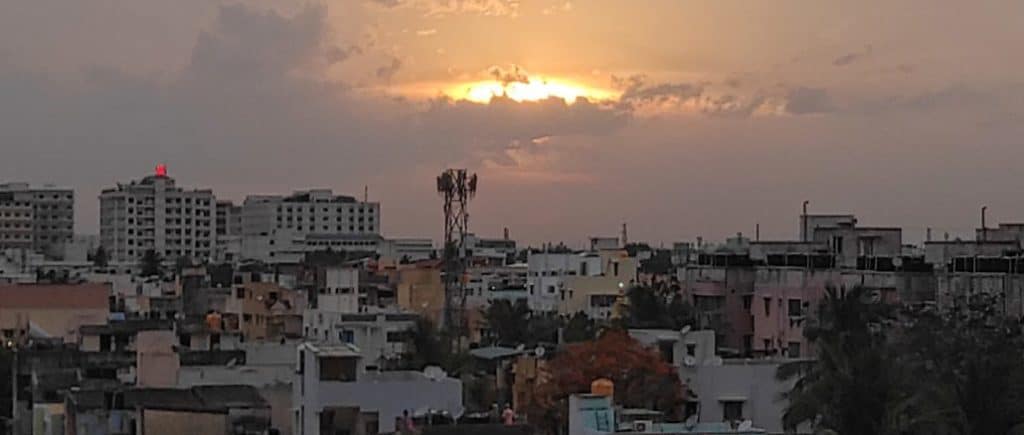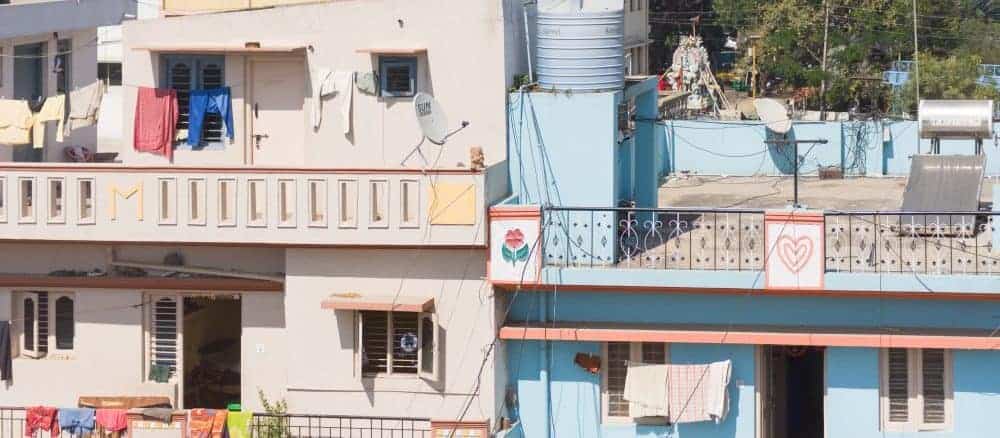With torrential rains lashing Chennai since early November, which left several areas in the city such as T Nagar, Velachery and parts of North Chennai like Pulianthope inundated, the recurring and infamous phenomenon of unregulated and illegal construction in the city is back under the spotlight.
Several reports and experts have pointed out yet again that along with faulty drains and blocked canals, rampant encroachments and illegal construction, especially along the banks of the Adyar and Cooum rivers and the Ennore-Kosasthalaiyar basin, have prevented water seepage, thus causing severe inundation.
According to a recent report in The New Indian Express, regarding the recent spell of flooding in the city, around 300 lakes, tanks and canals have disappeared from the city this past decade and the administration has claimed that there are over 1.5 lakh cases of illegal construction across Chennai.
But how do such illegal construction come up in the first place and what do the authorities do about it?
Various forms of unauthorised or illegal construction
To understand what makes the incidence of illegal constructions so rampant, it is also important to take a look at the different forms of violation and illegality that are commonly seen.
- Violation of CRZ norms and encroachment of water bodies
In January 2020, the Madras HC ordered the demolition of six luxury bungalows on the city’s East Coast Road, after these were found to be violating the Coastal Regulation Zone (CRZ) norms, which state that no construction activities should take place within 500 metres of the High Tide Line (the maximum point of the land where the water’s surface touches). In this case, the bungalows all were constructed within 200 metres of the line.
The court had sought an explanation from three senior secretaries of the state government as well as the Commissioner of the Chennai Corporation regarding the rampant violation of CRZ norms. The court had also imposed a fine of Rs 25,000 each on the Chennai Corporation and the Chennai Metropolitan Development Authority (CMDA) for abdicating their duties.
Then, there are the encroachments in and around the city’s lakes and rivers, as a result of which these water bodies or marshlands have dried up. This makes way for more settlements over these dried up water bodies, thus eating into the space for water to be absorbed into the ground. Due to this, the homes and establishments in the locality near these water bodies face a constant threat of floods during heavy rains.
- Wilful omission to hide encroachments
Let’s take an example from Pallavaram. It’s been over 10 years since David Manohar has been trying to convince the revenue officials of Pallavaram municipality to issue the patta (land deed) marking the encroachments on his land by an apartment builder. David is an activist with the NGO Arappor Iyakkam as well as a resident of Chromepet in Chengalpattu district, which is also a part of the Chennai Metropolitan Area (CMA). He has been involved in various fights against land grabbing and illegal constructions in Chennai over the years.
It was in 2011 that the builder in this particular case was given the approval for the construction of an apartment complex by the Pallavaram municipality. However, David alleges that when the plan was submitted for approval by the builder, they had conveniently hidden a strip of land being appropriated between the road and the property of the builder. This strip belonged to David. In the plan submitted by the builder, this plot was nowhere in the picture; it was just the building property and the road, allowing easy access for the builders into David’s land, which lay between the road and the builder’s property.
“The issue here was that the town planning officer and the planning inspector of the municipality never even bothered to check the revenue records to see if anyone else was in ownership of the properties there. Nor did they physically go and inspect the area to ensure that the plan was correct,” says David. He also alleges that the officials would have taken bribes from the builder to get their project approved. Thus the menace of illegal construction continues unchecked.
- Making deviations from the plan
There are several other instances where no action is taken against such violations. According to David, in Pallavaram itself, there are several residential and commercial complexes where they make deviations in construction other than what was shown in the plan submitted to the municipality for approval.
For example, if an approval was given only for the construction of two floors of a building, the builders would construct one extra floor. Or in certain cases, they would not maintain the required amount of setback space as approved in the plan and so on.
These are some examples of marginal violations but then there can be more dangerous ones such as the instances where buildings make structural changes to make it more economically viable while compromising on the quality of the construction, and so on.
Impact of unregulated construction
Explaining some of the consequences that these construction violations can have, David cites the example of builders adding more residential or commercial units than what was originally approved in the plan.
“In cases, sanction may have been given for the construction of an apartment for eight residential units, but the builder actually adds two extra units to this during the actual construction. Several builders end up doing this while the authorities turn a blind eye to this for obvious reasons,” says David who goes on to say that if the municipality provides sanction for 1,000 residential units a year, there will be at least 1,300 residential units that are constructed.

“The builders will either do this by adding an extra floor for housing units or by adding a few on the ground floor of the apartment, which has been shown as parking space in the plan,” adds David.
Now, the authorities such as the Chennai Metropolitan Water Supply and Sewerage Board (CMWSSB) and the Electricity Board will only provide enough resources as necessary for the 1,000 residential units and this will be used by 300 more units causing a shortage of water and electricity in the area. Some of these violations can also have severe impact on the environment such as the “heat island effect”, increasingly observed in cities these days. Higher density of buildings can lead to higher temperatures as compared to less densely constructed areas.
Read more: Land surface temperatures in Chennai: Which areas have become hotter and why?
Despite the city and its people facing all these issues, the question remains why no action has been taken against these violations. Which is the authority to look into such matters and what do the rules say regarding the construction of buildings in the city?
Competent authority and rules
The authority that looks after the regulation and enforcement of planning and construction in Chennai is the CMDA. According to Murugan, a Chief Engineer of CMDA, all constructions must be in compliance with the Tamil Nadu Combined Development and Building Rules, 2019 (TNCDBR) . He says that before 2019, the guidelines that were followed were based on the Development Regulation of the Second Master Plan.
Although the CMDA is the competent authority with regulatory powers, it delegates the responsibility to local bodies, which are also known as the “executive authority” as per the TNCDBR, to give permission and approval for constructions. Like in David’s case, the executive authority is the Pallavaram municipality.
However as per the TNCDBR (Page 21) , the permission granted by the competent or an executive authority shall not mean that the builder has gotten clearance on the following aspects:
- Title or ownership of the site or building
- Structural Reports, Structural Drawings and structural aspects. The Registered Architect or Registered Engineer and Structural Engineer on record as the case may be, shall be responsible for defects in the design
- Workmanship, soundness of structure and materials used
- Quality of building services and amenities in the construction of building
- Other requirements or licenses or clearances required for the site or premises or activity under various other laws.
It has also been stated that no land, premises or building can be developed, constructed, altered, reconstructed, subdivided, amalgamated, reconstituted, laid-out, changed or put to use in a manner that is not in conformity with the provisions of the rules mentioned in TNCDBR 2019.
According to the rules, if it is found that a person has secured the planning or building permit by forging or producing false documents, then the permit will be cancelled and a show cause notice will be issued.
Authorities responsible for areas of special character
- Continuous Building Areas (CBA)
According to the TNCDBR, buildings in continuous building areas, without setback space on the sides which are to be constructed, have to get an approval from the Directorate of Town and Country Planning or Government, depending upon the situation of the case.
- Coastal Regulation Zones (CRZ)
Developments in these areas shall be regulated with reference to the CRZ classifications and the regulations notified by the Government of India from time to time under section 3 of the Environment (protection) Act, 1986 (Central Act 29 of 1986).
Consequences of violation
Speaking to us, Murugan, the Chief Planner of CMDA said that if they are notified of a violation, they send a notice to the builder calling for the approval plan if the building has already been constructed, or a notice to stop the work if the illegal construction is underway.
“Once the notice is issued, we wait for a week and measure the building and find out if it’s according to the approved plan. If there is a violation, we list out the violations and inform the applicant to correct the violations. We give them a time, about a month or so to do it. If they are not complying with it, we go in for a lock and seal and in rare cases, we go for demolition,” he adds.
According to a report by The New Indian Express, the state government had formed a Special Task Force to crack down on illegal construction in Chennai based on a government order from 2018. In the last three years, this force remained largely on paper without any action been taken.
Complaint redressal
CMDA has provided a Toll Free No. which is 1 800 425 6099 to reach its enforcement cell, to make complaints and inform about any deviated / illegal constructions in Chennai Metropolitan Area (CMA). Based on the complaints, the authority will follow up on the planning permissions and approvals issued by it to the builders. If the permission is not issued by the CMDA, it will forward the complaint to the concerned local body.
The complainant can also send in a mail to the member secretary of the CMDA at mscmda@tn.gov.in.
As far as David’s experience goes, it was only in 2016, 5 years after the builder encroached upon his land and several complaints later that the municipality finally issued a lock and seal notice to the builder. However, David alleges that till today, no action has been taken. “In spite of being given the powers to sanction as well as to enforce the rules, the authorities do not act. All they do is issue sanctions and permissions, but do not act against any deviations or unauthorised constructs,” says David.

In Pallavaram/Tirusulam hills there are so many houses constructed with EB connections. Are they legal?